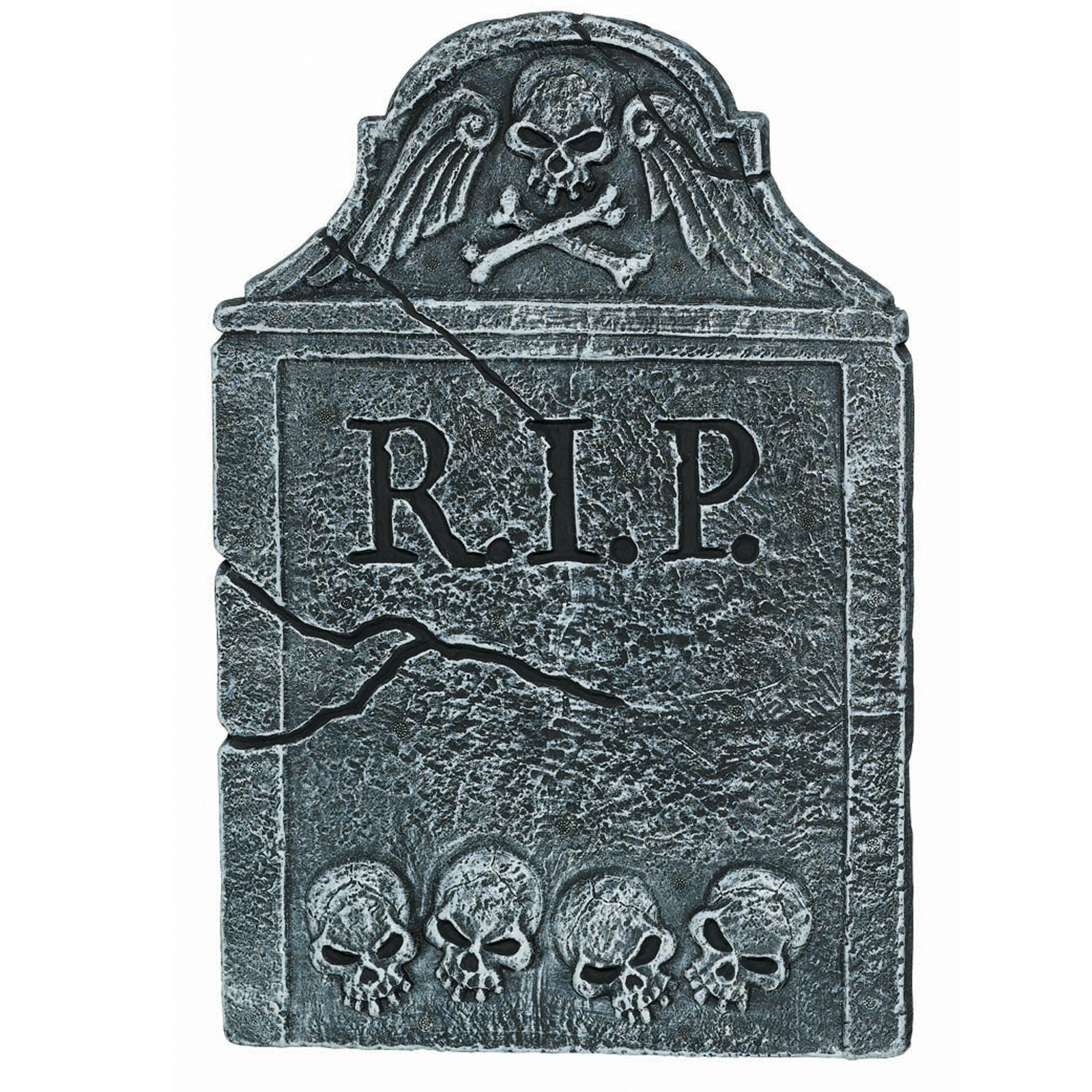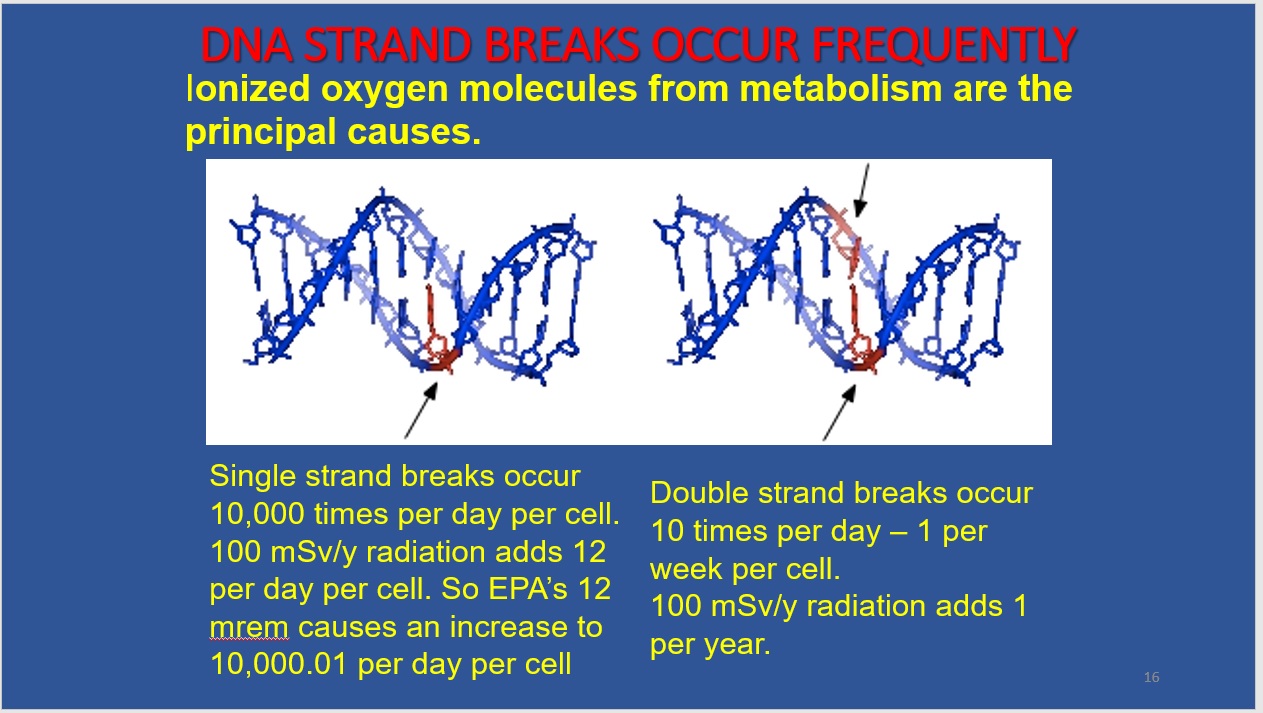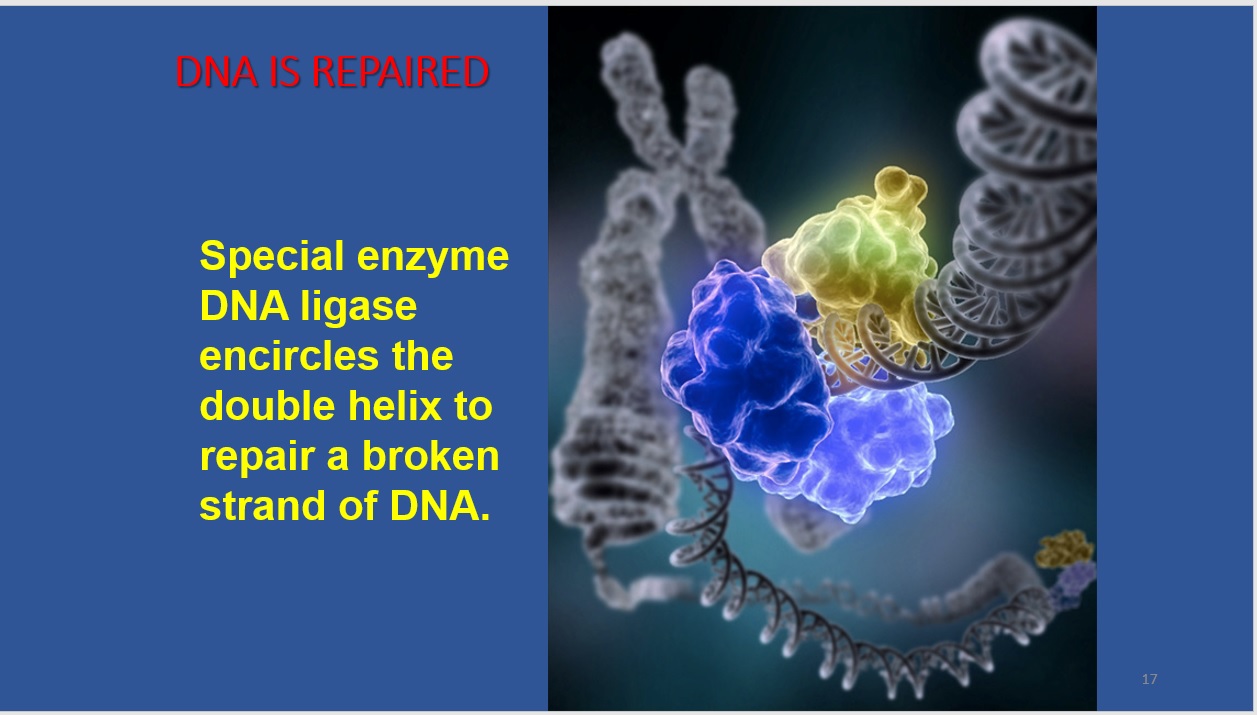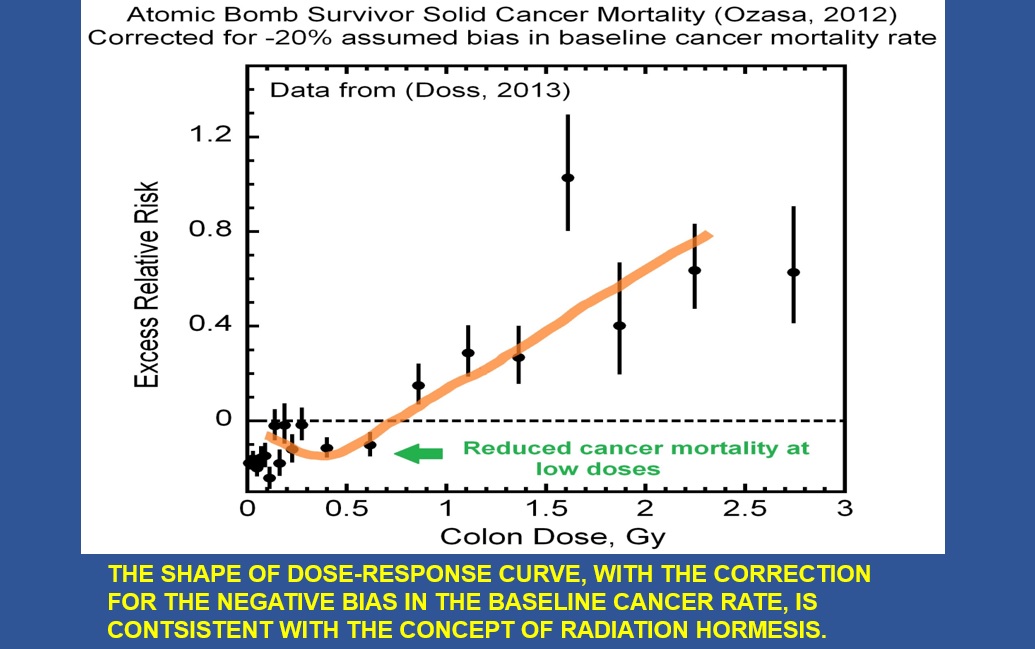THE RADAR SITE:
RADAR INFORMATION:
Overview
News and Events
RADAR MEMBERS
RADAR Home Page
RADAR RESOURCES:
RADAR ON-LINE DATA:
On-Line Decay Data
On-Line Kinetic Data
On-Line Model Dose Factors
INTERNAL SOURCES:
Occupational Dose Factors
Nuclear Medicine:
Therapy
EXTERNAL SOURCES:
Monte Carlo Applications
External Point Source
Beta Dose to Skin
Immersion in Air
Ground Contamination
Medical Sources
VARSKIN code
RADAR SOFTWARE
DOSE-RELATED LITERATURE
MEDICAL PROCEDURE DOSE CALCULATOR AND RISK LANGUAGE GENERATOR
RADAR DOCUMENTS:
System Overview
Internal Dose System
External Dose System
Decay Data
Kinetic Data
Phantoms
Risk Models
The Demise of the Linear, No-Threshold (LNT) Model of Radiation Carcinogenesis

The concept of LNT appears to be very contentious these days, but it isn’t really contentious. It’s just wrong. Let's start by looking at its fundamental suppositions:
- One radiation hit can cause a DNA mutation that can cause a cancer that can cause death. BUT:
- 106 DNA mutations/cell/day are produced by about 109 free radicals/cell/day derived from the metabolism of oxygen.
- 10-7 mutations/cell/day are produced by low linear energy transfer (LET) background radiation (x and gamma rays, beta particles) amounting to 0.1 cGy (rad) per year. These mutations are also caused by free radicals.
- All radiation doses are additive and the dose rate does not matter, so a dose received instantaneously causes the same damage as the same dose received very slowly over a long period of time. BUT:
- Incontrovertible research has shown that doses received gradually are far less hazardous and carcinogenic than the same radiation dose received instantaneously. This is because only permanent damage would accumulate, but repair or removal of damaged cells prevents such accumulation when the dose rate is low enough for such protective mechanisms to keep up with the rate of damage.
- The International Commission on Radiological Protection (ICRP), an absolutely committed LNT advocacy organization, introduced a “dose and dose rate effectiveness factor” of 2 to recognize the decreased effect of low dose rate. While this factor isn’t nearly enough, the admission of decreased low dose rate effect basically is an admission that LNT is not true. The use of such a made-up factor is merely an attempt to preserve, within two different dose-rate ranges, the very linear feature that it negates and denies.
- No processes exist at low dose that do not exist at high dose. Therefore, there is no such thing as radiation repair. BUT:
- Over 3000 papers have shown repair mechanisms for DNA.
- Over 150 genes have been identified that make compounds involved in DNA repair.


- There are three general classes of repair;
- antioxidant prevention,
- enzymatic repair of DNA damage, and
- removal of DNA alterations by apoptosis, differentiation, and the immune system.
- These repair systems sequentially reduce DNA damage from about 106 alterations/cell/day to about 1 fixed damage (mutation)/cell/day. These mutations in stem cells accumulate for a lifetime, with progression of DNA damage that is associated with aging and cancer.
- Even the Atomic Bomb Survivor Cancer Mortality Data, used by LNT-advocates, show that effects are nonlinear at low doses, and may even suggest a beneficial influence:

Doss M. Linear no-threshold model vs. radiation hormesis. Dose Response. 2013;11:480-497
Thus, the idea that every single radiation interaction in the body can produce a lethal cancer is purely UNSCIENTIFIC. DNA repair deniers simply choose to ignore a mountain of scientific data, and one can reasonably ask...WHY?
- Thousands of regulators would lose their jobs if low doses were admitted to be harmless or beneficial.
- Many lawyers would no longer make a living from radiation damage lawsuits.
- Many scientists would lose their grants, graduate programs, and government related impressive consultant positions involved in the pursuit of links between trivial radiation doses and cancers.
- Many politicians would no longer be able to use radiation hysteria to gain votes.
- Financial resources could be diverted from chasing phantom effects from trivial radiation doses to activities that actually save human lives.
- The public could be relieved of the stress caused by low dose radiophobia. They could stop worrying about getting badly needed medical procedures involving radiation (see this important page.), among other issues.
- Radiation Safety Officers (RSOs) could stop collecting useless paperwork for inspectors to inspect, and focus their time on real radiation hazards
- Siegel JA and Stabin MG. RADAR commentary: use of linear no-threshold hypothesis in radiation protection regulation in the United States. Health Phys 102:90-99, 2012
- Stabin MG, Siegel JA, and Marcus CS. RADAR position paper: risk estimates for low doses of radiation – science versus mindless belief. Health Physics News XL (9):17-19, September 2012
- Stabin MG and Siegel JA. Does the EPA contradict its own policies? Health Physics News XLII (6):17-19, June 2014
- Siegel JA, Stabin MG, Allison W, Brodsky A, Cai L, Cohen M, Cuttler JM, Dobrzynski L, Doss M, Esposito VJ, Feinendegen LE, Fellman A, Fornalski KW, Gomez L, Lewis P, Mahn J, Marcus CS, Payne SS, Pennington CW, Philbin J, Rithidech KN, Sacks B, Sanders CL, Scott BR, Socol Y, Weiner RF, and Welsh JS. Rebutting the EPA: time for a policy change. Available at: http://www.doseinfo-radar.com/EPA_response.html (posted June 2014) and http://radiationeffects.org/2014/06/08/rebutting-epa-time-for-a-policy-change/
- Siegel JA and Stabin MG. Cuddle wisely and infrequently: a campaign for our national safety. Health Physics News XLII (11):16-17, November 2014
- Pennington CW, Siegel JA, and Sacks B. Getting a grip on public fear of nuclear energy technology. So . . . what do we do now? Nuclear Townhall Newsletter (lead article), November 15, 2014. Available at: http://www.nucleartownhall.com
- Siegel JA and Stabin MG. Medical imaging: the challenges of radiation risk assessment. J Nucl Med 55:16N-17N, 2014
- Fornalski KW, Cohen M, Cuttler JM, Dobrzynski L, Doss M, Esposito VJ, Feinendegen LE, Fellman A, Miller ML, Orient J, Pennington CW, Rithidech KN, Sacks B, Sanders CL, Scott BR, Siegel JA, Socol Y, and Welsh J. French nuclear power plants and childhood leukemia. Dose-Response 12(4):518-521, 2014
- Siegel JA, Sacks B, Feinendegen LE, Welsh JS, Fornalski KW, Miller M, Mahn J, Gomez L, Stabin MG, Lewis P, Esposito VJ, Strupczewski A, Pennington CW, Cuttler JM, Rangacharyulu C, Davey C, and Sutou S. Comment on “Background Ionizing Radiation and the Risk of Childhood Cancer: A Census-Based Nationwide Cohort Study” Environ Health Perspect 123(8):A200, 2015 (http://dx.doi.org/10.1289/ehp.1510111)
- Siegel JA, Sacks B, and Stabin MG. LNT 999. Health Physics News XLIII (10):23-24, October 2015
- Siegel JA, Pennington CW, and Sacks B. EDITORIAL - When scientists fail at science: why low-dose radiation exposure should not be feared. Green Valley News; September 30, 2015. Available at: http://www.gvnews.com/opinion/columns/editorial-when-scientists-fail-at-science-why-low-dose-radiation/article_6de9d768-671f-11e5-9fc1-a3c4da95f8e0.html
- Siegel JA, Pennington CW, Sacks B, and Welsh JS. The birth of the illegitimate linear no-threshold model: an invalid paradigm for estimating risk following low-dose radiation exposure. Am J Clin Oncol 2015; doi: 10.1097/COC.0000000000000244
- Siegel JA and Pennington CW. The mismeasure of radiation: debunking the flawed science that low-dose radiation may cause cancer; in fact, it may even be beneficial. Skeptic Magazine 20(4):46-51, 2015
- Siegel JA and Welsh JS. Does imaging technology cause cancer? Debunking the linear no-threshold model of radiation carcinogenesis. Technol Cancer Res Treat 15(2):249-256, 2016
- Siegel JA, Pennington CW, and Sacks B. Low-dose radiation exposure should not be feared. Phys Today 69(1):12-13, January, 2016. Available at: http://dx.doi.org/10.1063/PT.3.3037
- Sacks B, Meyerson G, and Siegel JA. Epidemiology without biology: false paradigms, unfounded assumptions, and specious statistics in radiation science (with commentaries by Inge Schmitz-Feuerhake and Christopher Busby and a reply by the authors). Biol Theory 11(2):69-101, 2016; doi: 10.1007/s13752-016-0244-4. Available at: http://link.springer.com/article/10.1007/s13752-016-0244-4
- Welsh JS and Siegel JA. Why what you think about radiation might just be wrong. U.S. News & World Report; Op-Ed, April 21, 2016. Available at: http://health.usnews.com/health-news/patient-advice/articles/2016-04-21/why-what-you-think-about-radiation-might-just-be-wrong
- Siegel JA, Pennington CW, and Sacks B. Siegel, Pennington, and Sacks reply. Phys Today 69(7):14-16, 2016
- Sacks B and Siegel JA. Jan Beyea mischaracterizes the work by Siegel et al. (2016). Environ Res 150:663, 2016
- Siegel JA, Pennington CW, Sacks B, and Welsh JS. Rectifying radon’s record: an open challenge to the EPA. Int J Radiol Imaging Technol 2(2):014, 2016. Available at: http://clinmedjournals.org/articles/ijrit/international-journal-of-radiology-and-imaging-technology-ijrit-2-014.pdf
- Siegel JA, Marcus CS, Welsh JS, Pennington CW, and Stabin MG. Regulatory application of the LNT hypothesis and ALARA to protect radiosensitive people is misguided. Health Physics News XLIV (11):23-24, November 2016
- Siegel JA, Pennington CW, and Sacks B. Subjecting radiological imaging to the linear no-threshold hypothesis: a non sequitur of non-trivial proportion. J Nucl Med 58(1):1-6, 2017 (doi:10.2967/jnumed.116.180182)
- Siegel JA, McCollough CH, and Orton CG. Point/counterpoint: advocating for use of the ALARA principle in the context of medical imaging fails to recognize that the risk is hypothetical and so serves to reinforce patients’ fears of radiation. Med Phys 44(1):3-6, 2017 (https://doi.org/10.1002/mp.12012)
- Siegel JA, Sacks B, Pennington CW, and Welsh JS. Response to comments by Drs. Hamaoka and Beyea on “The birth of the illegitimate linear no-threshold model: an invalid paradigm for estimating risk following low-dose radiation exposure.” Am J Clin Oncol 40(1):106-107, 2017 (10.1097/COC.0000000000000357)
- Siegel JA and Sacks B. Eliminating the use of the linear-no-threshold assumption in medical imaging. J Nucl Med 58(6):1014-1015, 2017
- Siegel JA, Pennington CW, and Sacks B. The linear no-threshold assumption and its ALARA principle: non-science that is inapplicable to medical imaging. Diagnostic Imaging Europe 33(2):70-71, March 2017
- Pennington CW and Siegel JA. Nuclear energy's critical illness: continue with failed treatments or pursue the cure? Public Utilities Fortnightly 155(3):40-43,74-75, March, 2017
- Siegel JA, Sacks B, Pennington CW, and Welsh JS. Dose optimization to minimize radiation risk for children undergoing CT and nuclear medicine imaging is misguided and detrimental. J Nucl Med 58(6):865-868, 2017 (doi:10.2967/jnumed.117.195263)
- Marcus CS and Siegel JA. Who needs another LNT meeting? Health Physics News XLV(6):25, June 2017
- Siegel JA, Sacks B, and Welsh JS. Time to eliminate LNT: The NRC needs to adopt LT and eliminate ALARA. Nucl Med Biomed Imag 2(1):1-5, 2017 (doi:10.15761/NMBI.1000118)
- Siegel JA, Sacks B, and Welsh JS. Time to terminate LNT: radiation regulators should adopt LT. J Radiol Oncol 1:049-053, 2017
- Sacks B and Siegel JA. Preserving the anti-scientific linear no-threshold myth: authority, agnosticism, transparency, and the standard of care. Dose-Response 15(3):1-4, July-September 2017; doi: 10.1177/1559325817717839
- Pennington CW and Siegel JA. A failed ontology: the linear no-threshold model of radiogenic cancer. Nuclear Engineering International 62(756):36-38, July 2017 (www.neimagazine.com)
- Siegel JA, Sacks B, and Socol Y. The LSS Cohort of Atomic Bomb Survivors and LNT. Comments on ‘‘Solid Cancer Incidence among the Life Span Study of Atomic Bomb Survivors: 1958–2009” (Radiat Res 2017; 187:513–37) and “Reply to the Comments by Mortazavi and Doss” (Radiat Res 2017; 188:369–71). Radiat Res 188(4):463-464, 2017
- Siegel JA, Marcus CS, and Pennington CW. No need to attend another conference of inaction. Health Physics News XLV(9):31, September 2017
- Siegel JA, Sacks B, Pennington CW, and Welsh JS. DNA repair following exposure to ionizing radiation is not error-free: but this does not increase cancer incidence or mortality. J Nucl Med: Published January 4, 2018 as doi:10.2967/jnumed.117.198804
- Siegel JA. A dose of skepticism: Jeffry Siegel versus widely held radiation beliefs. HealthCare Business News Magazine, March 2018: 58-59.
- Siegel JA, Greenspan BS, Maurer AH, Taylor AT, Phillips WT, Van Nostrand D, Sacks B, and Silberstein EB. The BEIR VII estimates of low-dose radiation health risks are based on faulty assumptions and data analyses: a call for reassessment. J Nucl Med: Published February 23, 2018 as doi:10.2967/jnumed.117.206219